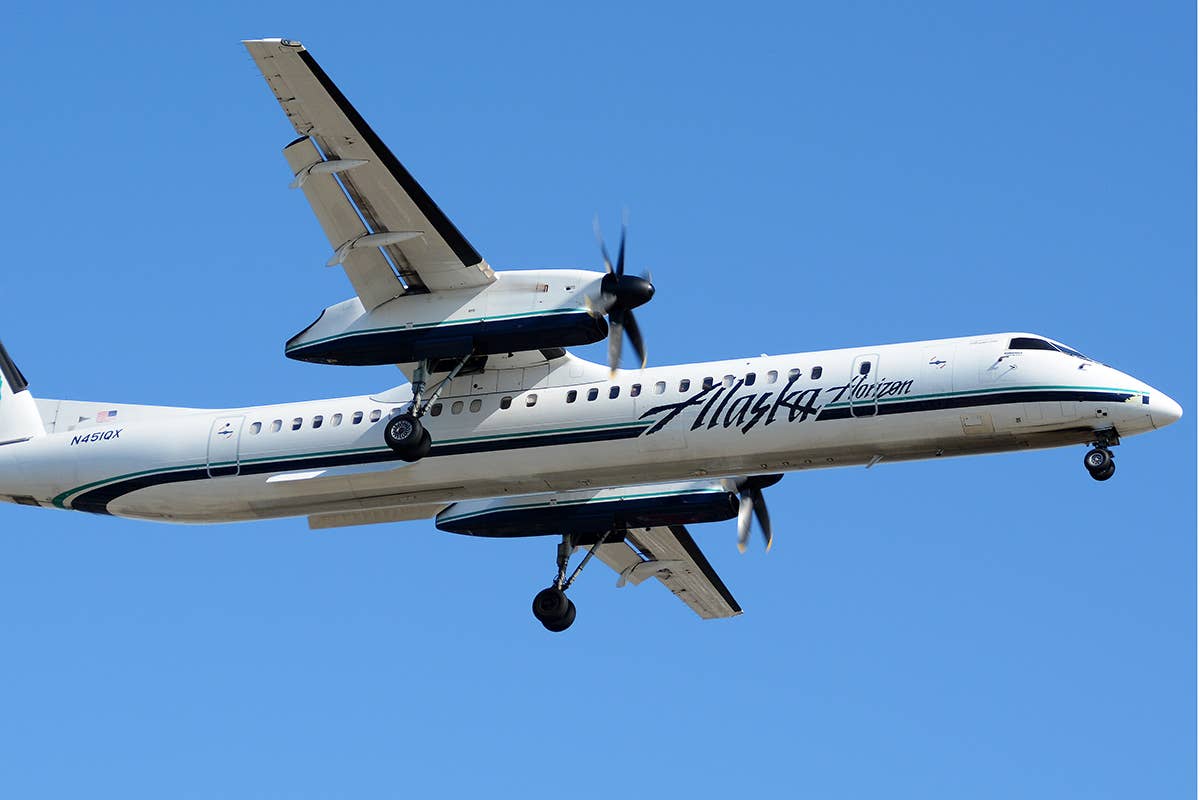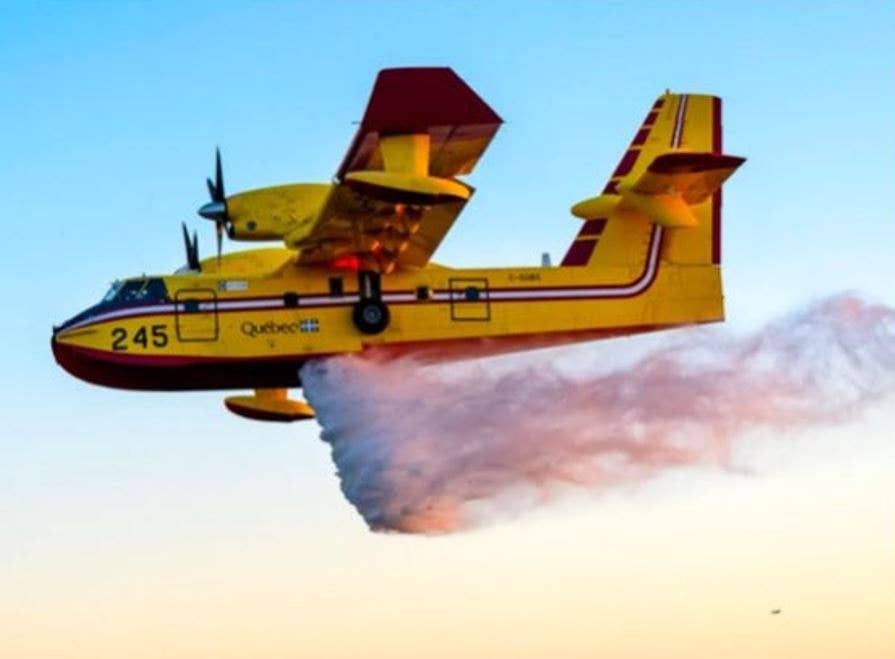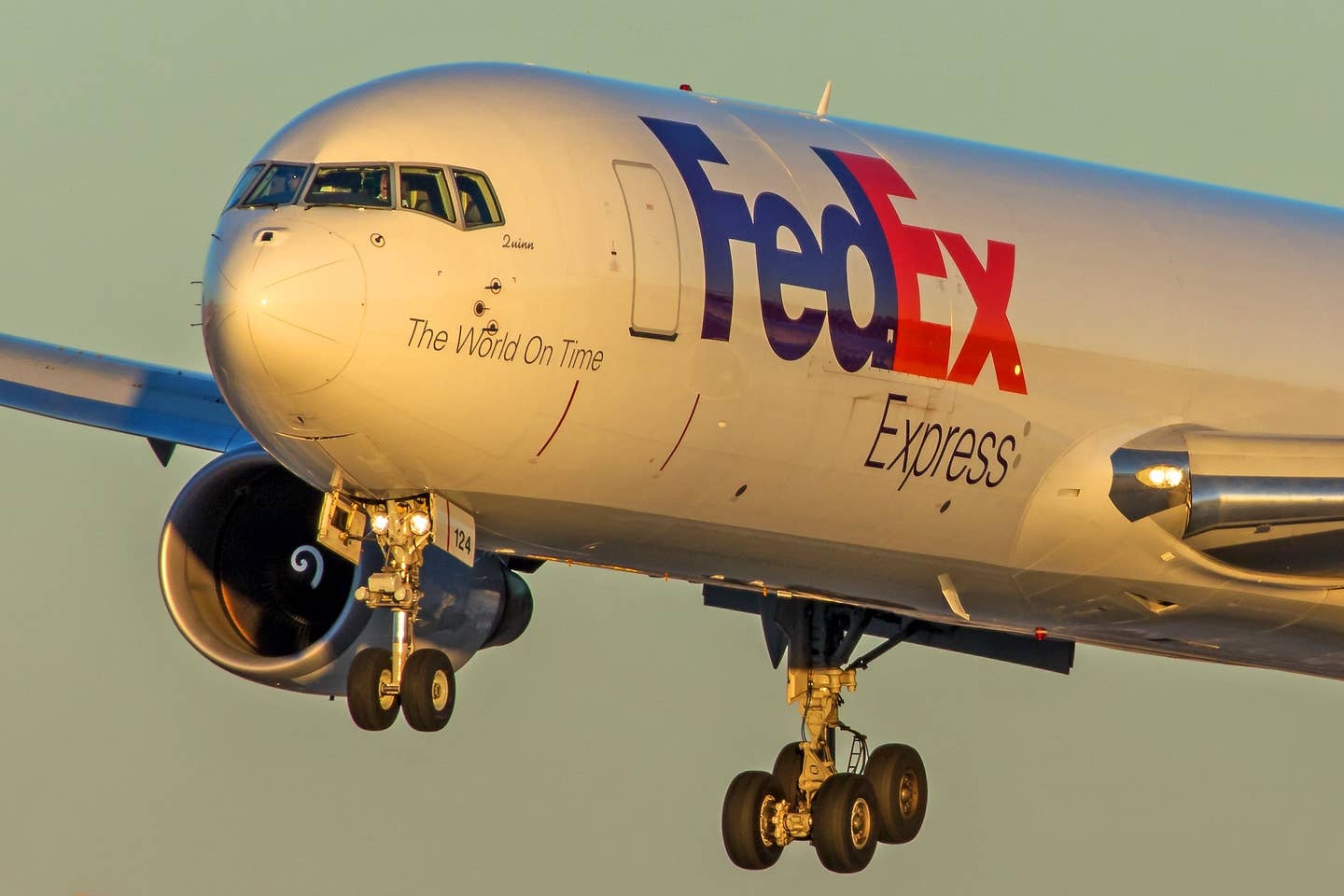How 2018’s Q400 Tragedy Changed the CFI Perspective
The anniversary of the intentional crash serves as a reminder to one CFI to keep her guard up.

A Horizon Air Bombardier Q400 [Shutterstock]
On August 10, 2018, 29-year-old Richard Russell, a Horizon Air ground service agent with no pilot experience, stole a Bombardier Q400 from Seattle-Tacoma International Airport (KSEA) and went on a 75-minute joy ride. You may have seen the video of the Q400 doing loops and barrel rolls over the Puget Sound. The joy ride ended with an intentional crash on Ketron Island, a 221-acre heavily wooded and fortunately, sparsely populated location west of the town of Steilacoom, Washington.
Russell was the only fatality in the crash and there was no damage to homes from the fire that followed.
The aircraft was heavily fragmented on impact. Although the bulk of the wreckage was removed shortly after the crash, parts of the airplane—some not much larger than a quarter—are still found today.
The theft and the crash hit close to home, and I mean that in every sense of the word.
Local TV news reporters interrupted regular programming with special reports stating an all-stop had been called at Sea-Tac. I texted one of my airport “sons” who works as a ramper—he replied he was safe, but locked down because of a situation. It turned out he worked with Russell and had seen him just a few minutes before the theft.
I heard and saw the Q400 passing overhead and wondered why it was so low and so off course. I saw and heard the F-15s that were scrambled from Portland to intercept it. I have always wondered if Russell was aiming for the island or intended to come down in the water. Ketron Island is only accessible by ferry and/or a short—and I do mean short—kayak ride from the mainland. Had he turned the aircraft a few degrees east, he would have likely come down in my very populated neighborhood.
There was a temporary flight restriction (TFR) over the crash site for approximately 24 hours so that the investigation could be conducted. This did not stop people from coming into the flight school and asking us to fly them over the crash site. Some of these people were reporters from local newspapers who wanted to take photographs of the wreckage. One or two may have been from the National Transportation Safety Board. I had no problem with the NTSB reps or reporters. But in the following days, we started getting visits from people who talked about "how cool" it was that he had stolen an airplane and intentionally crashed it—they wanted us to fly them over the route he had flown and over the crash site.
The owner of the flight school was wary. He wasn't about to risk his aircraft—or any of us—with someone who wanted to commit suicide by airplane, and of this I was glad. Flight schools need revenue generated by flight time, but any school that puts its people and airplanes at risk is not someplace you want to work.
CFI Reaction
After the Q400 incident, other CFIs and I talked about what we would do if someone tried to overpower us in the cockpit and turn the airplane into a weapon. These were similar to the conversations we had after the September 11, 2001, attacks. Although small aircraft do not have the destructive power of a fuel-laden airliner, they can still do damage. And because of the close quarters in the cockpit of these two- and four-place airplanes, the ability to defend yourself can be limited.
One coworker announced he had started carrying his gun to work. This ended after he attempted to pull his wallet out of his jacket one morning and the gun fell out and slid across the floor. The office manager (who I think kept her piece strapped to her ankle) was not amused.
Pepper spray also proved to be a bad idea—this was discovered when a learner brought her purse on a dual instructional flight and the pepper spray discharged. The CFI and learner made it back to the ground, as the CFI told me later, "with boogers down to their knees."
With the exception of a training scenario and a really, really inappropriate CFI when I was a learner, I have never had to physically defend myself in an aircraft. Martial arts are a hobby for me—I have taught self-defense courses—but I don't like the idea of having to use these skills in an airplane. It is much better if you avoid getting in the airplane and putting yourself in this situation. There are some situations that set off alarm bells—and we are trained to spot them.
Required TSA Training for CFIs
As an outgrowth of the September 11 attacks, CFIs and other people employed at flight schools are required to take annual General Aviation Security Awareness training. It is an online course that uses scenarios to teach you what to look for as potential security threats, such as suspicious persons loitering near aircraft, people trying to break into aircraft, people who appear to be under control of someone else, fake IDs, people using large amounts of cash to try to coerce you to make a flight, etc. The phrase "when you see something, say something" is used. You are taught when it is appropriate to call the local police and when to call the Aircraft Owners and Pilots Association Airport Watch number: 1-866-GA-SECURE, or 1-866-427-3287. The latter is a toll-free national hotline.
I have called it once.
It was a Saturday and I was working at a flight school in Puyallup, Washington. It was just me and the front desk attendant on duty when a pair of 20-something young men came in saying they had just purchased a Cessna 172 and they wanted me to solo them in a few hours so they could fly it home to Utah the next day. They had zero flying experience. I said there was no way I could do that. They were pushy. They had a huge stack of cash. They did not have aviation medical certificates, but one had a commercial trucker's license and what he said was a medical certificate. Both IDs had photographs—the same guy, but different names and birthdates. These two were the poster boys for AOPA's Airport Watch program. We had a code phrase for “call the police” which I used—the desk attendant’s eyes went wide, and she grabbed her purse which contained her cellphone and ducked into the women's restroom.
One of the guys became suspicious, asking why she took her purse to the restroom?
"That time of the month," I said dismissively, then proceeded to take them into the pilot store attached to the flight school. There was no way I was going to fly with them, but I walked them all over the store—and in front of several security cameras—as if looking for something that would facilitate that learning process. They got frustrated and left—but not before the desk attendant had scurried out of the restroom and taken a photograph of their car and license plate. The next day I found myself being interviewed by the FBI. The pair, I was told, were part of an extremist group and on the “FBI watch list.”
As the years pass, I look back on both these events, and it is clear that they have changed my perspective as a CFI. Flying is a wonderful thing, and when someone makes it a form of destruction that saddens me greatly.

Sign-up for newsletters & special offers!
Get the latest FLYING stories & special offers delivered directly to your inbox






